Have you seen any dragons before? In real life? No? So, how can you imagine and describe it so well? This is because myths about dragons are always present all over the world and also in popular culture. From Mesoamerica to China, you can find myths about dragons everywhere. These mythical monsters get more stage time than actual animals that walk the earth.

The myths about dragons were always alive in roller coasters and illustrations, even without the CGI dragons in Hollywood whether they made dragons man's best friend as in "The Dragon Trainer" or the personification of evil as in "Lord of the Rings." The legendary myths about dragons have always shown that creatures have a massive snake-like body along with the ability to fly.
Although most dragons are supposed to have four legs, they have two legs or no legs in some myths. In the folklore of medieval Europe, dragons breathe fire, fly and are generally perceived as malicious creatures. In Eastern cultures, the notion of dragons is contradictory, since they are wingless and accompanied by the weather, especially floods and precipitation, and they are considered promising beings. But before we get into the different types of myths about dragons around the world, we should know the origin of the dragons. So let's dive into it!
The Origins of Myths of Dragons
in Babylonian myths about dragons, it was Tiamat, a deity monster with a snake body that emerged from the sea to threaten the cosmos with a return to the ancient chaos. Marduk, the heroic young god, took the challenge and killed the monsters while saving the entire creation. The myth of Tiamat can be traced back to the second millennium BC 
In the Bible you can find the presentation of the Tiamat myth with other Mesopotamian mythologies. The other references include the myth of the Psalms and the book of Job that will inform you about the war between Leviathan, a combination of a serpent and a whale, and the God of Israel who destroyed the former. Several variants of the Tiamat myth can be discovered many times in European and Mediterranean cultures. The main characteristics of the myths about dragons in the western region consist of a dragon or a similar creature and a main character with heroic characteristics who must kill that threat from the beast.
You can reveal the battles with a snake-like creature in Greek mythology as well. For example, Zeus secured his throne on earth and in heaven by killing the fiery dragon Typhon who had snakes for his legs with the thunderbolts. The myth of Typhon follows a legend from the nearby civilizations, which involves the Hittites.
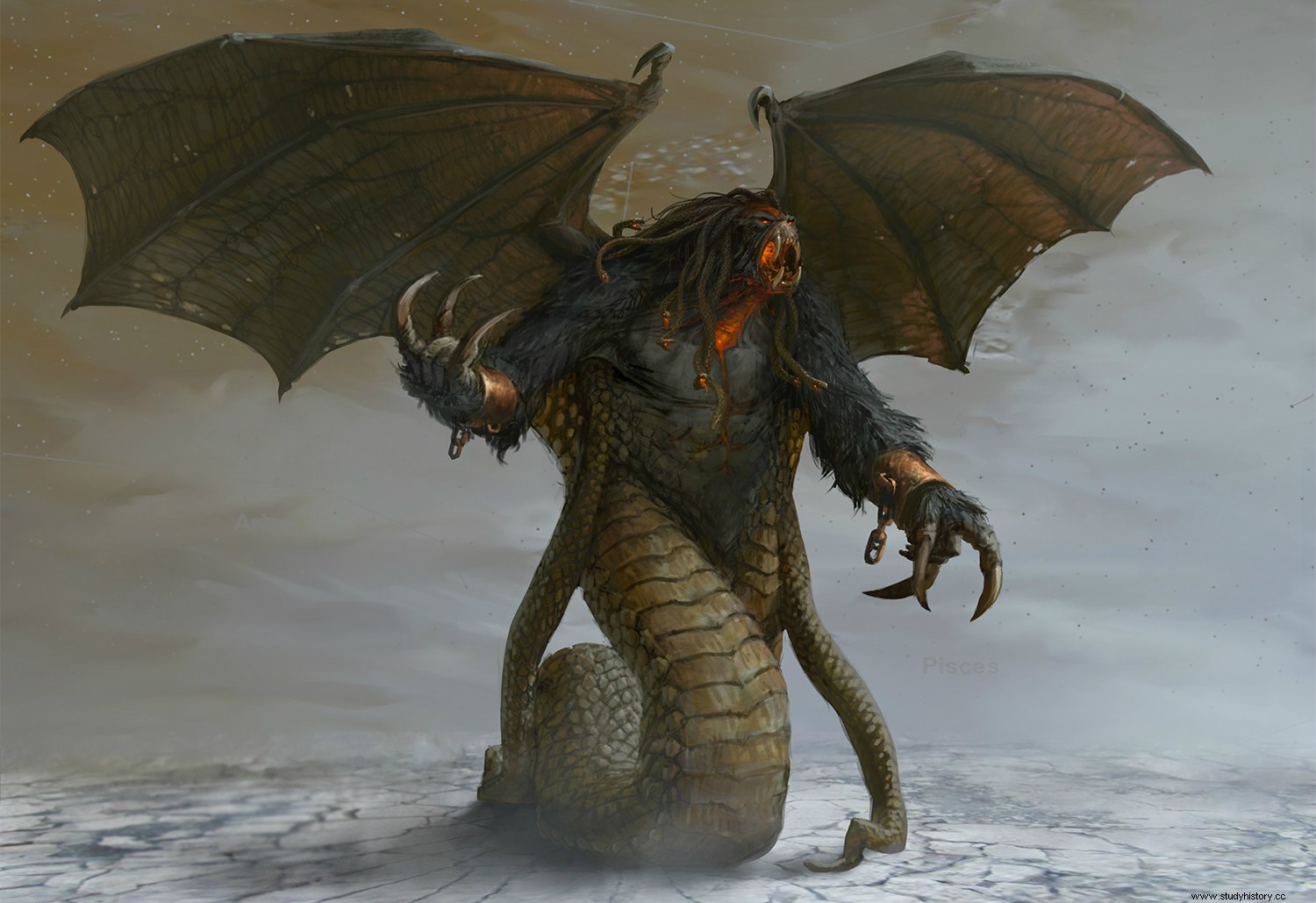
From the Greek word "drakon" comes the term dragon, but it is not an appropriate translation as the Greeks used drakon to mean big snake. For its part, the term "dragon" comes from a verb meaning "to see" and the relationship becomes visible in the legend "Jason and the golden skin."
In the story, the sleepless dragon guards noble but heavy outerwear. Medea, the significant other of Jason, was educated in folk pharmacology and they managed to make the giant beast fall asleep for a while. Greek mythologies like this are full of additional motifs which in this scenario are to highlight the property of dragons as jealous protectors of a golden treasure.
Dragon legends in medieval Europe
The Legend of Saint George and the Dragon
From Perseus and Tiamat, it is not a long way to go to explore the myths of dragons in medieval Europe and the legend of Saint George. Although it is believed that the saint was alive during the third century AD, the legend of his war with the dragon became widespread after a millennium in the Middle Ages. The story can be discovered in "The Golden Legend", a collection of biographies of saints. During the thirteenth century, the Italian Archbishop of Genoa and chronicler named Blessed Jacobus da Varagine collected the story, and William Caxton printed it in English in 1483 for the first time.
According to "The Golden Legend", Saint George was born into Christian parents in Cappadocia, modern-day Turkey, and when he grew up, he joined the Roman army. Legend has it that the saint traveled to Libya and came across a city called Silene. A dragon lived in a pond near the city that encompassed the entire countryside and the dragon threatened the townspeople. The inhabitants of the city offered the victims of the dragon to save their lives, which first included two sheep, but then became the youth and children of the city.
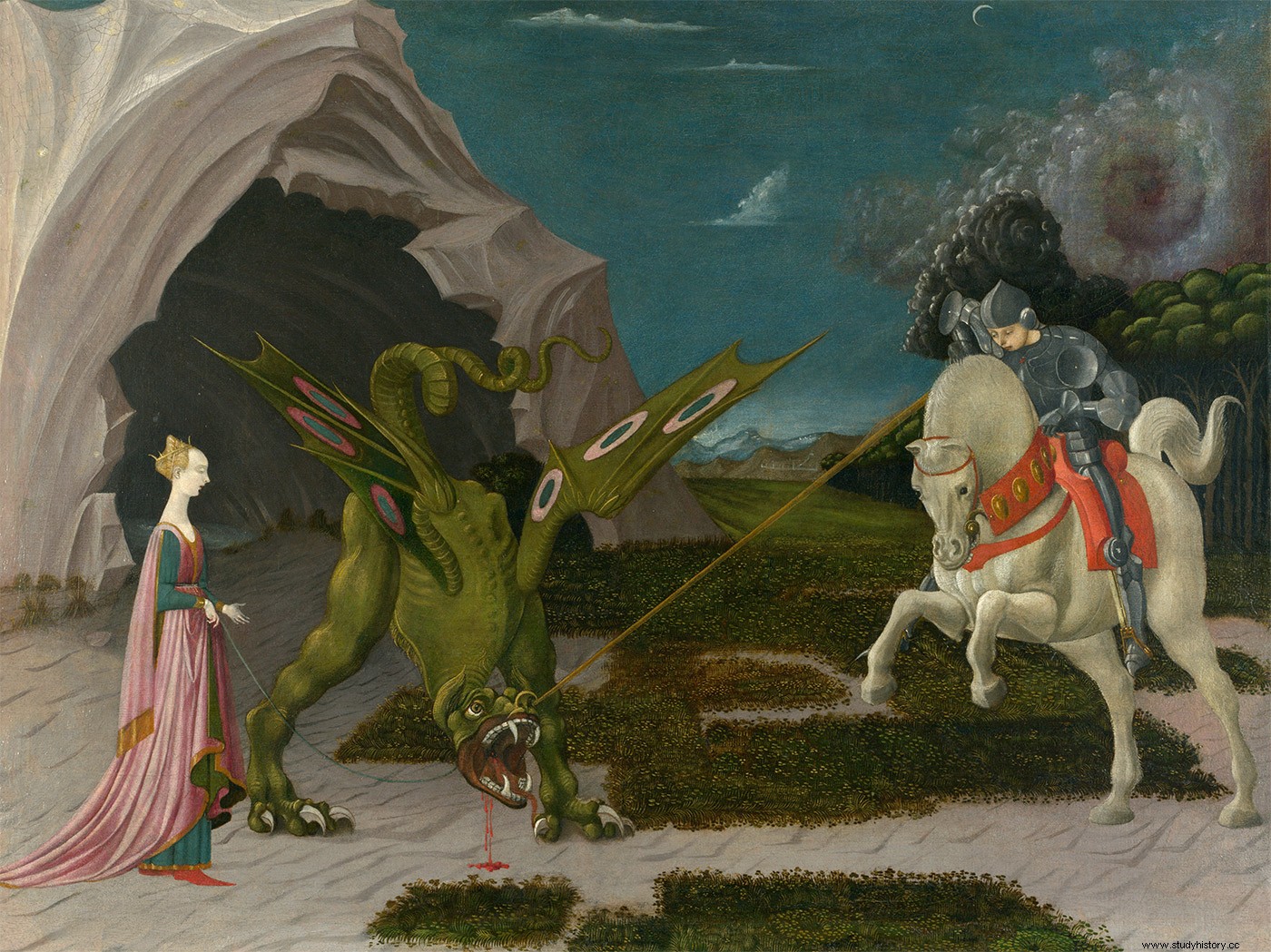
When Saint George came to town, it was the day the city princess was chosen to be sacrificed. After hearing the story of the dragon from the princess, the saint was determined to kill the dragon and save the townspeople along with the princess. When the dragon appeared from the pond, Saint George made the sign of the cross, and on horseback he stormed towards the dragon, and by using the lance he impaled the monstrous creature.
After wounding the dragon, he asked the princess for her belt to tie the now domesticated animal, and accompanied the couple to town. Saint George offered the townspeople to kill the dragon if they became Christians. They agreed to the proposal and converted and the saint beheaded the dragon.
The story of Saint Margaret of Antioch
Although the story of Saint Margaret of Antioch is not as popular as that of Saint George, he is not the only dragon killer in the Western myths about dragons. Like Saint George, you can find the legend of Saint Margaret in "The Golden Legend" as well.
She was thrown into prison at the age of fifteen when she refused to renounce her faith in Christianity and marry the Roman official named Olybrius. While in prison, she prayed that the evil spirit she was fighting would be presented to her. After praying to God, the Devil appeared before her in the form of a dragon.
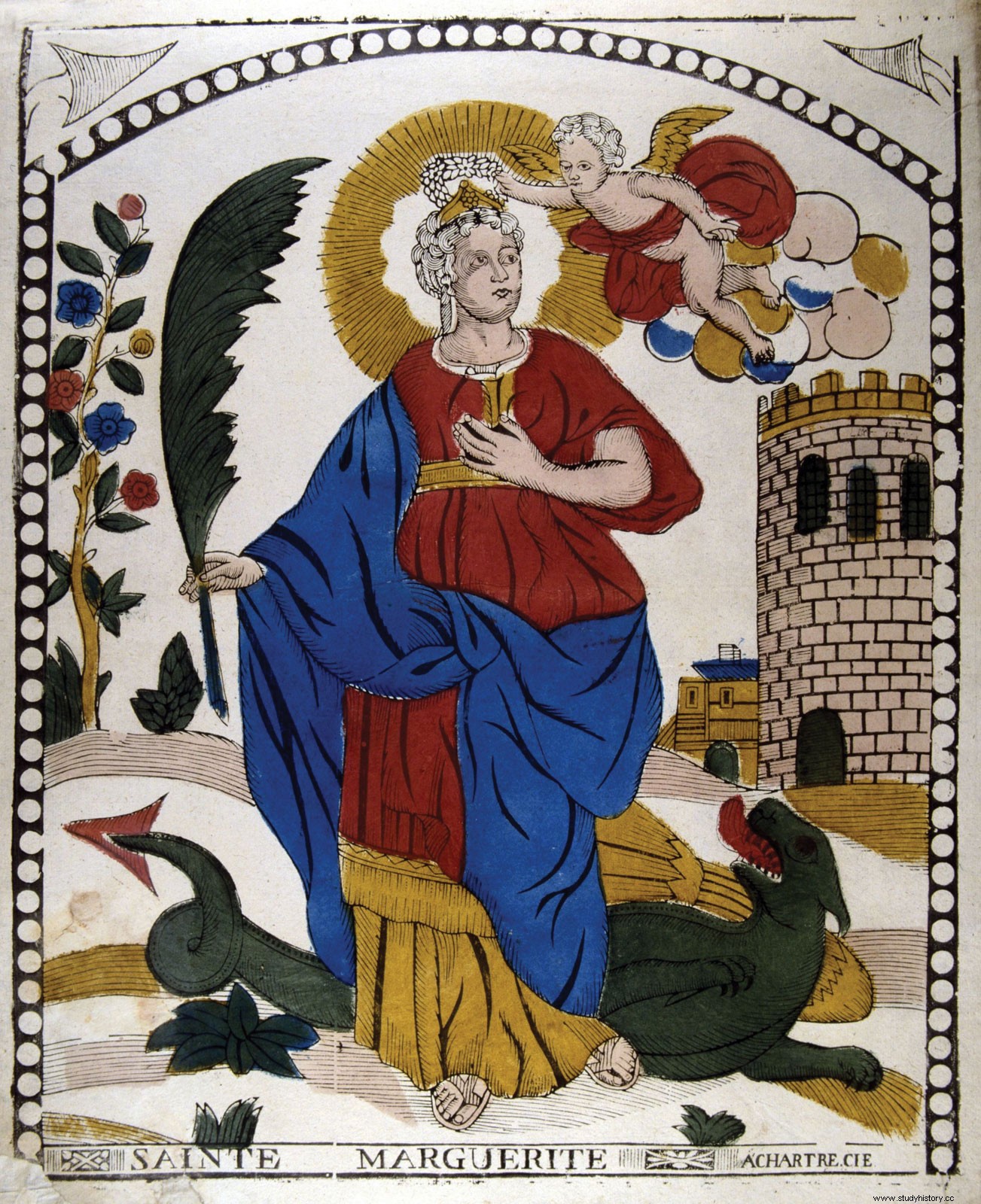
In a version of the legend, the saint immediately made the sign of the cross when the dragon attacked her. But in another version she was swallowed by the dragon, and while she was in the belly of the beast, she signed the cross and was freed from the belly when it burst open, completely unharmed. She was then sentenced to death because she constantly refused to give up Christianity.
Myths about dragons in the eastern region
As I mentioned above, the myths about dragons are different in the eastern region, as dragons are considered benevolent beings in cultures. In the mythologies of Japan, China and Korea, Dragon Kings have been found and are believed to be responsible for water-related phenomena, especially rain.
Dragon kings are strongly regarded when they bring rain to promote agriculture. In these cultures it is necessary to keep the dragon kings happy, since an angry dragon king can cause serious damage such as typhoons, floods, and storms. In the eastern region, the dragon kings are also considered anthropomorphic beings, when they live in the palaces under the sea and rule over the sea creatures.
The distinction between the eastern dragons
The dragons in Japan are believed to have three toes, and they firmly believe that all eastern dragons have been generated from Japan. They also believe that the Japanese dragons get toes when they go far away from Japan. Thus, the other dragons have more toes. The myth of dragons conveys that the breath of a Japanese dragon turns into clouds that can produce fire or rain. If they choose, they can ascend to heaven because of the size of their heads.
Like the Japanese, the Chinese also believe that the eastern dragons were born from their land, even though the Chinese dragons have five toes. They began to lose their toes as they flew on from China. So Japanese dragons have three toes while Korean dragons have four. Koreans also believe that their land is the birthplace of all eastern dragons. If a Korean dragon flew towards China, they got toes, but they lost toes if they flew towards Japan.
There are differences between male and female dragons in Eastern culture. For example, while female kites hold fans by the tail, male kites hold clubs. In the myth of dragons, the eastern dragons are described as descendants of the sky or clouds. You can also see a pearl sometimes, called the "Pearl of Wisdom" that the eastern dragons possess. The horns on the male dragon are thinner at the bottom and strong and thicker at the top of the horn. The females have finer and rounder manes than the males. The female dragons also have straight noses and thin shells with thicker tails.
The myth of the oriental dragons
All nine types of Chinese dragons are referred to as the oriental dragons. Did you know that nine is a lucky number for the Chinese? These nine oriental dragons include the horned dragon, the spiritual dragon, the celestial dragon, the dragon of hidden treasures, the winged dragon, the yellow dragon, the coiled dragon and the dragon king.
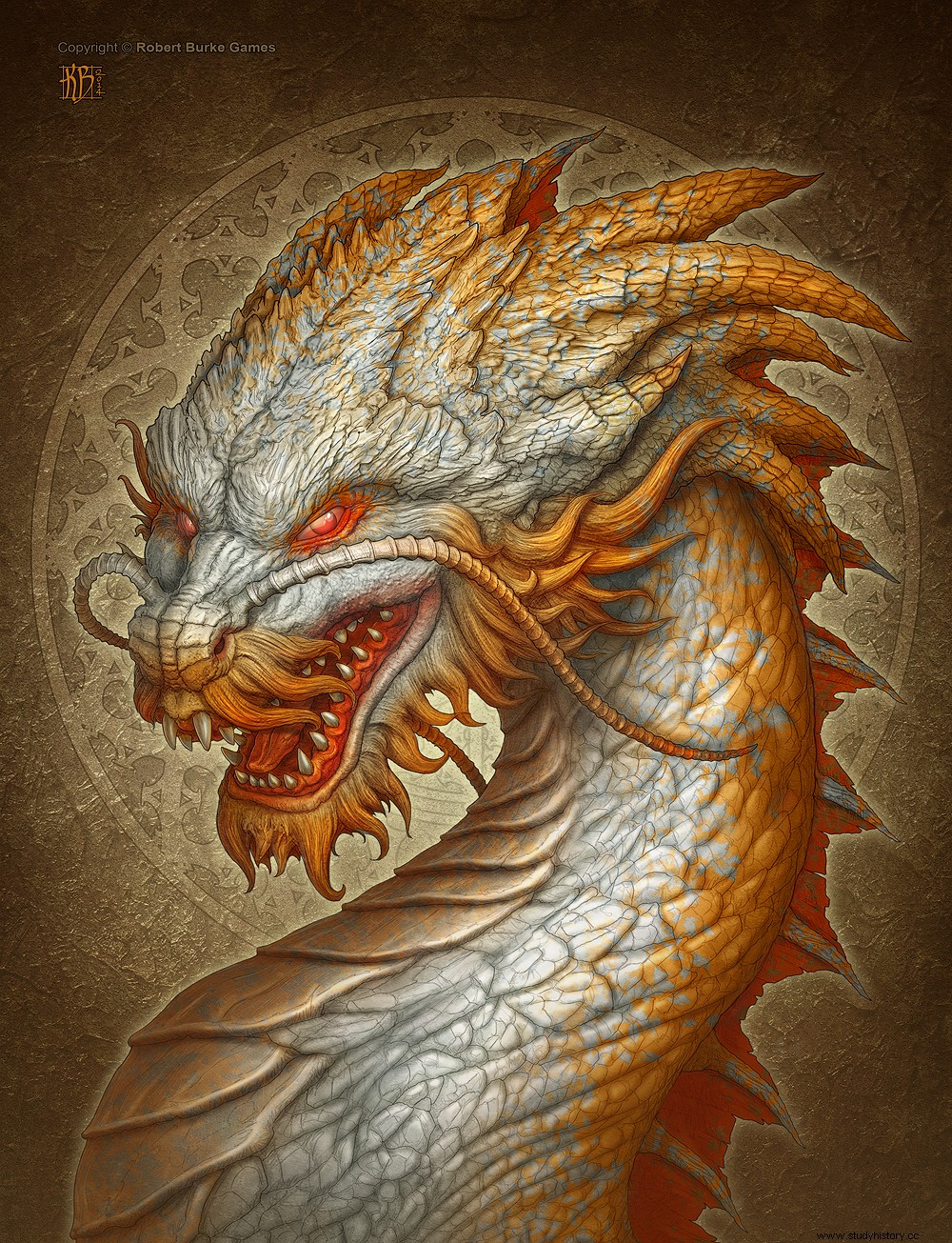
Although Horned Dragons are deaf, they are also the most powerful of the Oriental dragons. They are also called lungs and they have the power to bring down rain. You should know that in the myth of dragons, their tails face north while their heads face south. The horned dragons represent the sun and the east.
The Dragon King is four dragons that watch over the four great seas. The Chinese go to them if there is little or no rain as Dragon King is honored and honored. The four dragons inhabited east, west, north and south waters.
The unique look of the Chinese dragon
According to the myth of dragons, a notable Chinese ruler named Huangdi, the Chinese ancestor had fought against nine tribes on the Yellow River Valley. The legendary ruler mixed the totem of each tribe with his dragon Totem which depicts the appearance of nine characteristic animals of a Chinese dragon. Therefore, the Chinese dragon is a complex creature with the antlers of a deer, the eyes of a shrimp, the nose of a dog, the whiskers of a catfish, the mouth of a bull, the mane of a lion, the claws of a hawk, the shells of a fish and the tail to a snake.
The myth of dragons in Africa
The myth of Ayida-Weddo
It is not the case that only Eastern cultures have benevolent dragons. The practitioners of Vodou, especially those who lived in Haiti and Benin, believe in the spirit of Vodou called Ioa referred to as Ayida-Weddo. They are also called the rainbow snake. Neither as an eastern dragon nor as a western, they still have the body of a giant snake with iridescent shells.

It is believed that Ayida-Weddo is the Ioa of the rainbow, snake, water and fertility. According to myths about dragons, there was a huge snake circling the earth to prevent it from crumbling. With the first rainfall, Ayida-Wedo appeared and the former snake named Damballah-Wedo fell in love with her and married her. While the eastern dragons have provided the people with basic necessities, Ayida-Weddo and her husband have taught mankind the secrets of life and how to live a spiritually satisfying and meaningful life.
The myth of Apep
Another example of a myth about an African dragon is Apep. Although Apep has a large serpent-like body like Ayida-Weddo, it was not a benevolent creature like its predecessor, since it was the dragon of destruction, chaos and darkness. One of the famous stories of Apep was the battle stories with the Sun God Ra.
The ancient Egyptians believed that the sun passed through the sky on a solar bark and every night it had to pass through the subsoil and Ra had to protect the sun from the evil forces in the subsoil, of which Apep was the most dangerous. The myth is unclear about Apep's home in the underground. While some believed that the demon lived just below the horizon, others believed that it was the heart of the underground or 'the tenth region of the night'. Since the serpent was also known as "world circles", it explains that the demon's residence was in so many places.

The battle between Apep and Ra was inevitable, and the snake could use its hypnotic powers on Ra to immobilize him and his followers. Only the God of Chaos Set could bypass it and then Set would pierce the demon and the sun would continue its journey. In another myth, Apep would succeed in devouring the sun, but Ra and his followers would cut a hole inside the demon and it would free the sun.
Legends of Dragons in America
The myth of the Piasa bird
The myths about dragons can also be found in the new world in the USA in a creature called the Piasa bird which is described in a cliff facing the Mississippi river north of Alton, Illinois. The earliest accountant for the painting is Jacques Marquette who wrote in 1673 that he saw two monsters in the painting. With deer horns on their heads, they were the size of a calf, red eyes and a male face with a tiger beard, a snake-like body with a long tail that ended with a fish tail.

In 1836, John Russell published the background story of the painting in which he claimed that the name of the creature is Piasa, which means "the bird that devours man." he also said the bird killed many warriors in Native American villages. Ouataga, a chief, set a trap to catch and kill the bird by offering himself as bait. The plan worked and twenty warriors came from their hiding places to throw their poisoned arrows to kill the bird. It later became known that Russell told his son that he fabricated the story a bit, but then the story of Piasa was very popular.
The Myth of Teju Jagua
In the south-central part of South Africa, lives the named indigenous tribe guarani who spoke of the dragon called Teju Jagua. This creature is believed to have a lizard body and seven dog heads. It was able to fire from the eyes. According to Guarani legend, the creature was the firstborn of an evil spirit named Tau and a mortal woman named Karana.
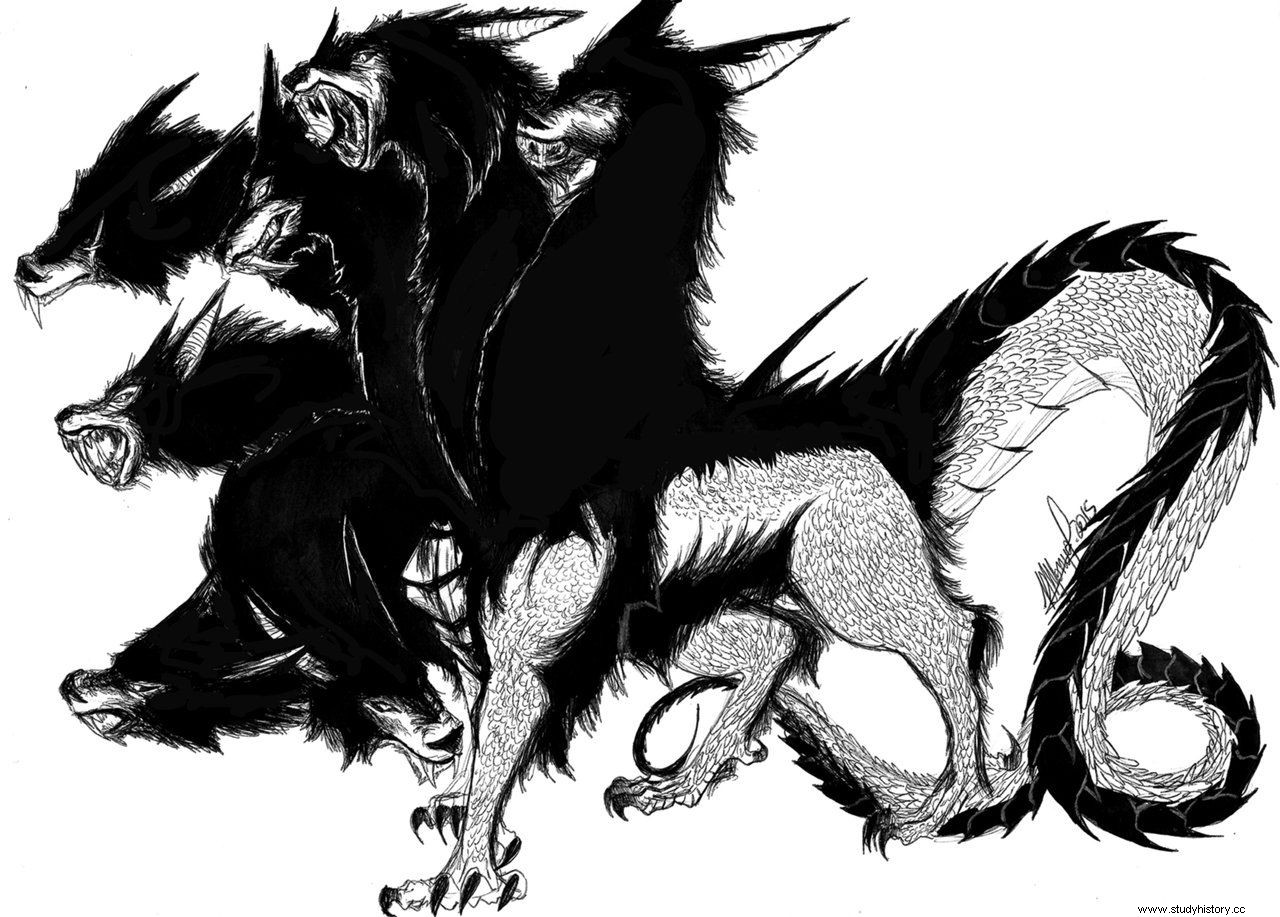
Although Teju Jagua has a frightening appearance, the supreme God, Tupa, has made him a harmless creature. Teju Jagua's diet includes primarily fruit. However, Teju Jagua's favorite food is honey. His brother Jasy Jatere wanted to give him a gingerbread man.
For more information on the myths about dragons, visit here ..
And here we are at the end! I hope you found this article interesting and would like to know more. Or you want to personally visit one of the places. Until then, travel well, have a good time.
